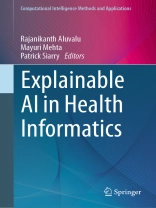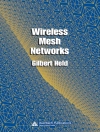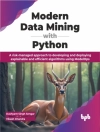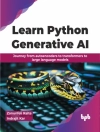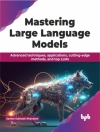This book provides a comprehensive review of the latest research in the area of explainable artificial intelligence (XAI) in health informatics. It focuses on how explainable AI models can work together with humans to assist them in decision-making, leading to improved diagnosis and prognosis in healthcare. This book includes a collection of techniques and systems of XAI in health informatics and gives a wider perspective about the impact created by them. The book covers the different aspects, such as robotics, informatics, drugs, patients, etc., related to XAI in healthcare.
The book is suitable for both beginners and advanced AI practitioners, including students, academicians, researchers, and industry professionals. It serves as an excellent reference for undergraduate and graduate-level courses on AI for medicine/healthcare or XAI for medicine/healthcare. Medical institutions can also utilize this book as reference material and provide tutorials to medical professionals on how the XAI techniques can contribute to trustworthy diagnosis and prediction of the diseases.
Tabla de materias
Chapter 1. Introduction to Explainable AI.- Chapter 2. Explainable AI Methods and Applications.- Chapter 3. Unveil the Black Box Model for Healthcare Explainable AI.- Chapter 4. Explainable AI: Methods, Frameworks, and Tools for Healthcare 5.0.- Chapter 5. Explainable AI in Disease Diagnosis.- Chapter 6. Explainable Artificial Intelligence in Drug Discovery.- Chapter 7. Explainable AI for Big Data Control.- Chapter 8. Patient Data Analytics using XAI- Existing Tools & Case Studies.- Chapter 9. Enhancing Diagnosis of Kidney Ailments from CT Scan with Explainable AI.- Chapter 10. Explainable AI for Colorectal Cancer Classification.- Chapter 11. Explainable AI (XAI)-based Robot-Assisted Surgical classification Procedure.- Chapter 12. Explainable AI Case Studies in Healthcare.
Sobre el autor
Rajanikanth Aluvalu is Senior Member-IEEE, Currently working as Director, Symbiosis Institute of Technology, Hyderabad campus. With over 21 years of teaching experience, he has specialization in high-performance computing and holds a Ph D. Dr. Aluvalu is an editorial board member for the IJDMMM journal published by Inder science and served as the academic editor for Peer J Computer Science journal. He is also a reviewer for several Scopus indexed and SCI indexed journals. He has published more than 90 research articles in various peer-reviewed journals and conferences, and edited several books published by Springer, DE Gruyters, Wiley, IGI-Global and Apple Academic Press. Dr. Aluvalu is a life member of ISTE and a member of ACM and MIR Labs. He has organized various international conferences and delivered keynote addresses in his field.
Mayuri Mehta is a professor in the Department of Computer Engineering of Sarvajanik College of Engineering and Technology, Surat, Gujarat, India. Her areas of interest include data science, artificial intelligence, medical image analysis, health informatics, computer vision and computer algorithms. With 23 years of professional experience, she has achieved several academic and research milestones and demonstrated excellent administrative and organizational capabilities. She holds 18 patents, including 14 in the healthcare domain to her credit. Additionally, she has co-edited 5 books, authored 45 research papers, and 4 book chapters. She is a Senior Member of IEEE and also a member of professional bodies such as ISTE and CSI.
Patrick Siarry was born in France in 1952. He received the Ph D degree from the University Paris 6, in 1986 and the Doctorate of Sciences (Habilitation) from the University Paris 11, in 1994. Dr. Siarry was initially involved in the development of analog and digital models of nuclear power plants at Electricité de France (EDF). Since 1995 he has been a professor in automatics and informatics. His main research interests include computer-aided design of electronic circuits and the applications of new stochastic global optimization heuristics to various engineering fields. He is also interested in the fitting of process models to experimental data, the learning of fuzzy rule bases, and of neural networks.
